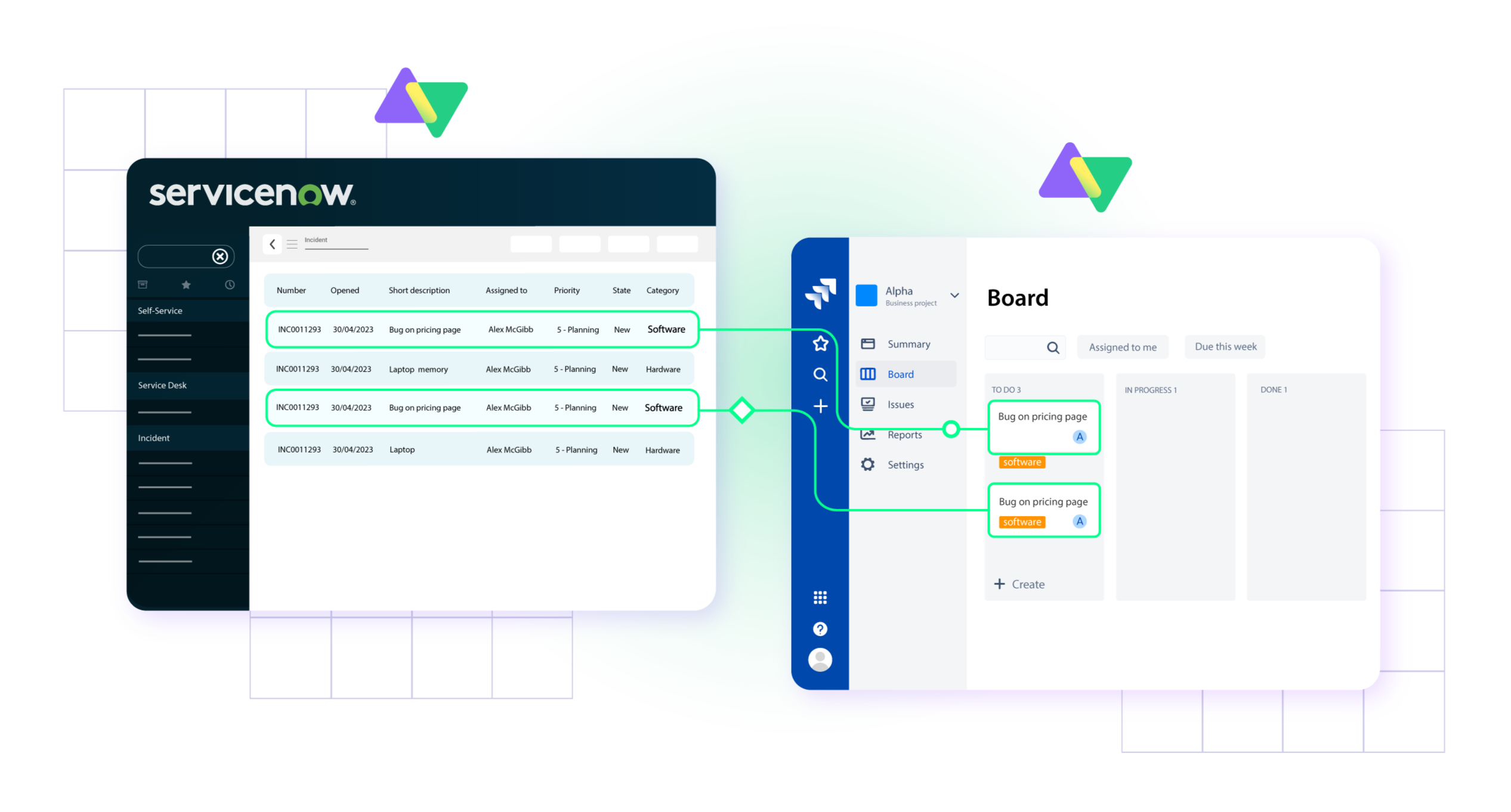Fully Customizable
Two-way Integration
Exalate handles all your integration needs.
Craft even the most complex use cases, orchestrate business workflows, and sync any data securely.
Connect multiple applications within your organization or across company borders.




Sync Anything
Sync any or all standard and custom entities, the way you want.


Real-time Sync
Keep everyone on the same page with instant updates between teams. Resolve tickets, bugs, and incidents faster with real-time sync
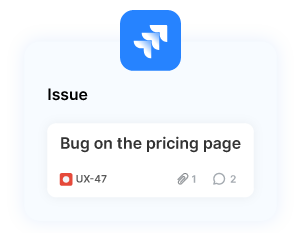
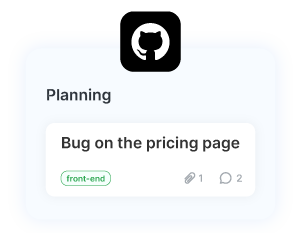

Map, Transform, and Filter Data
Using Groovy scripts, create custom mappings with just a few lines of code. Map statuses, issue types, and priorities the way you need.
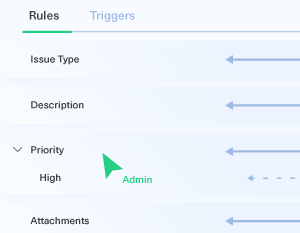
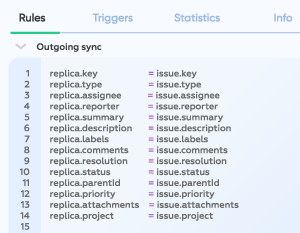

Connect Any Number of Instances
Connect multiple projects, instances, and platforms. Use different rules for each connection
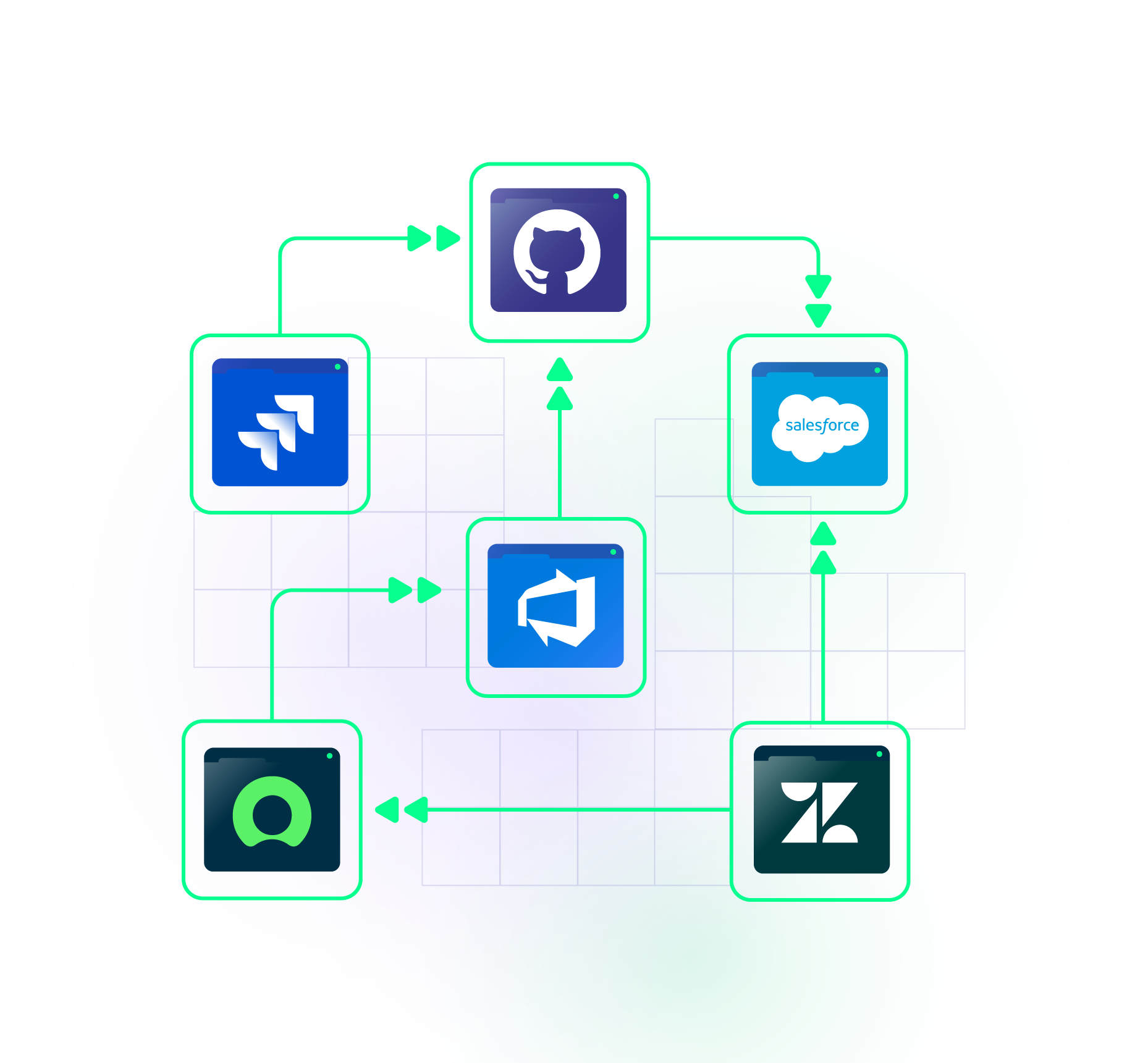
Automate the Sync with Triggers
Set various conditions for automatic synchronization.

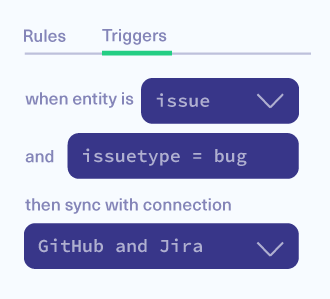

Unlimited Transactions & Entities
Exchange any number of tickets, issues, incidents, or work items within each of your connections.
Bulk Connect
Link multiple existing entities with a single operation.
Install
Install the Exalate app on each tool you want to sync, so every admin has complete autonomy over their integration.
Connect
Connect the instances you want to integrate. Choose between a no-code set-up or scripting mode.
Customize
Set your sync rules to make sure the right data is shared.
Prompt Exalate’s AI to generate rules, or fine-tune with Groovy-based custom mappings and logic for complete control.
Automate
Set triggers to automate your sync based on specific conditions.
Synchronize
Now your connected instances will exchange information automatically. Happy syncing!
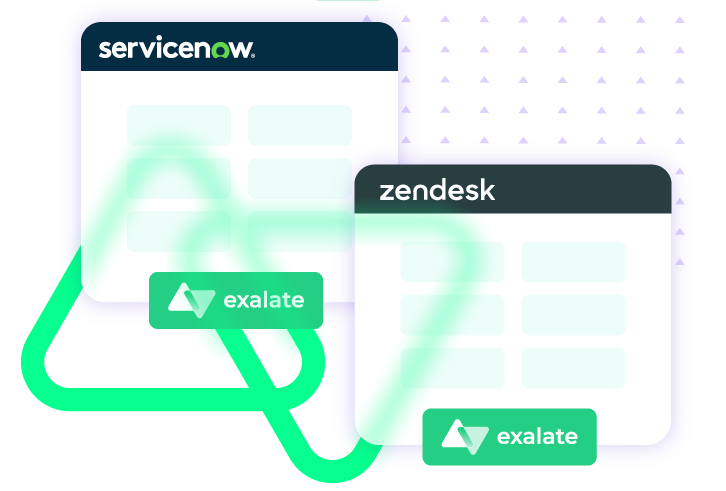
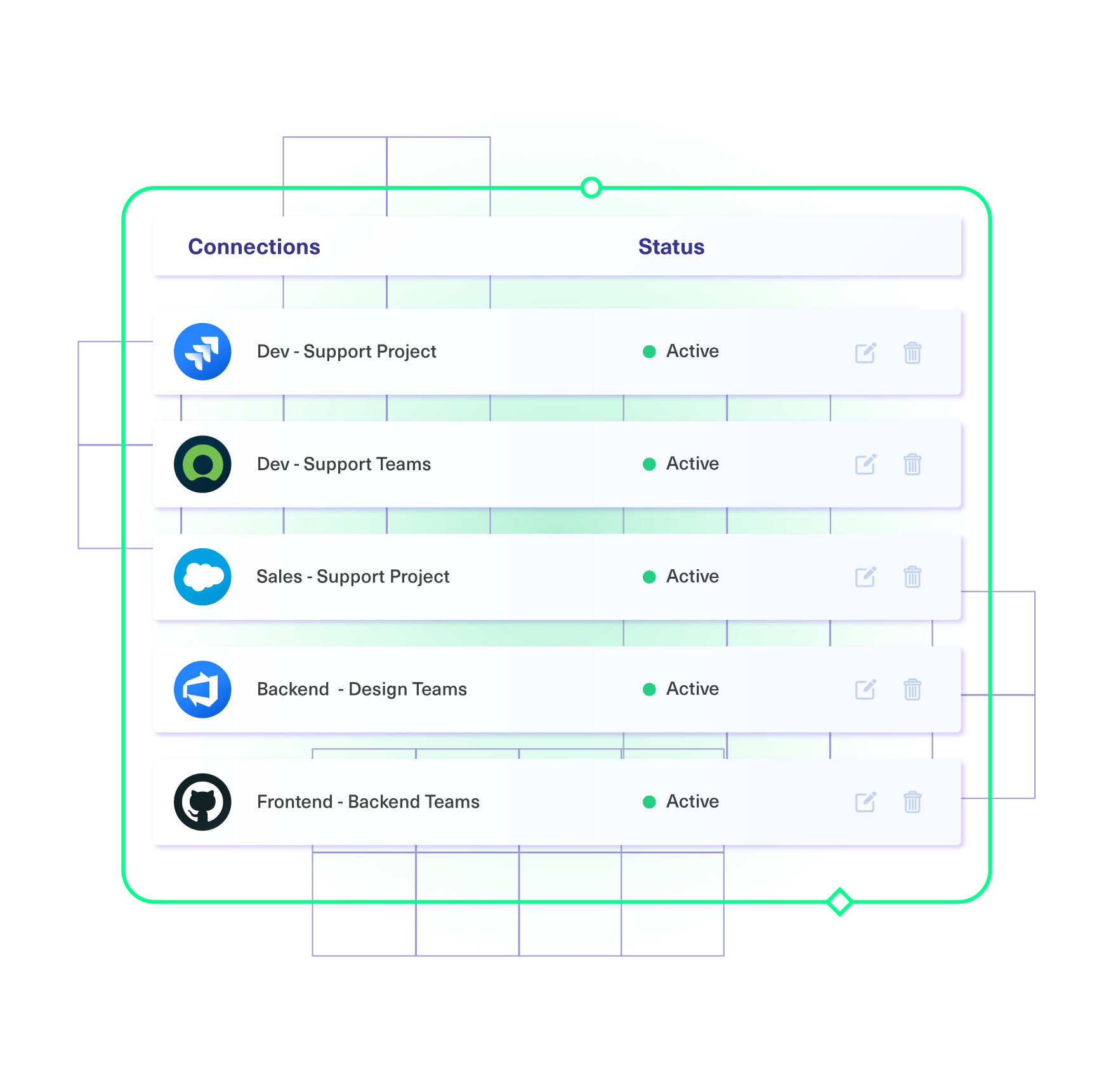
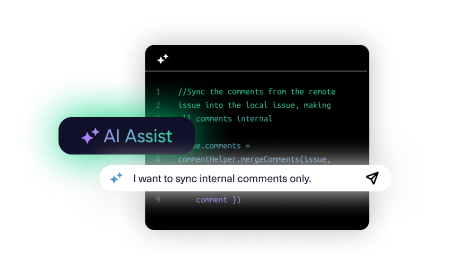

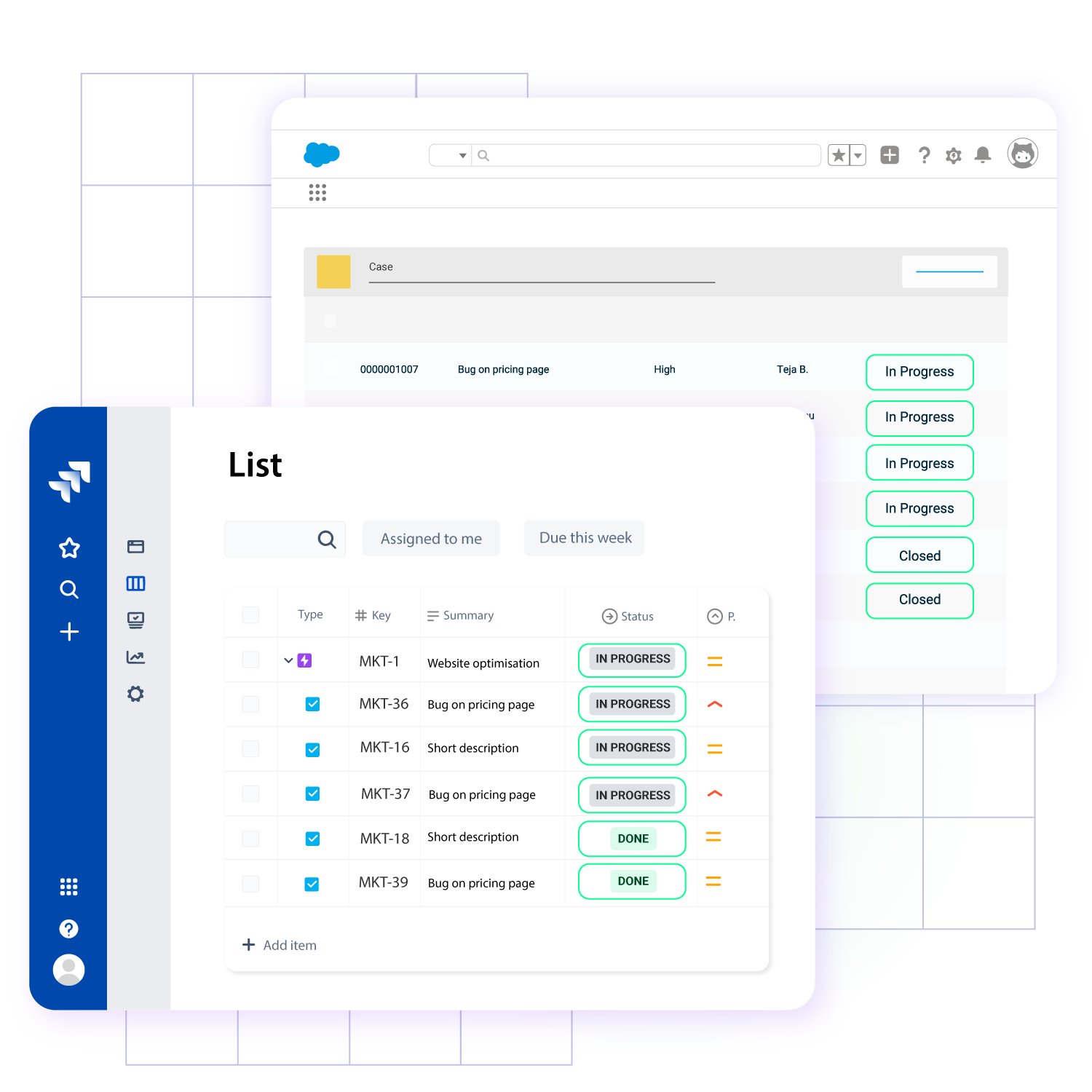
Accessible to Both Business and Technical Users
Your Integration, Your Rules
Have granular control and full flexibility to craft your integrations with just a few lines of code. Or, prompt what you need and AI Assist will write the code for you.
- Exchange any data available via the connector's API
- Customize triggers using native query language
- Deepen, change, adjust existing connections easily
- Control outgoing and incoming data on each side
- Manage configs for all nodes using external script
Book a demo to see Exalate in action
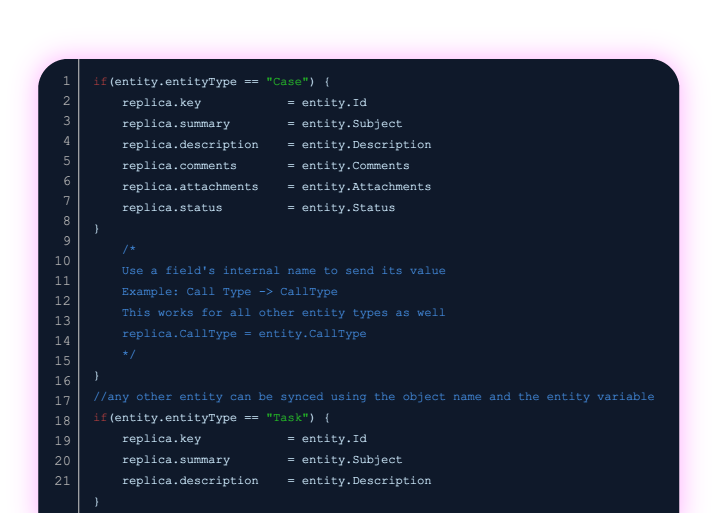
Request a Quote
Visual Mode
- Drag-n-drop interface for faster, no-code set up
- Customize your synchronization rules from one side of the connection
Enjoy a seamless integration, no coding knowledge required.
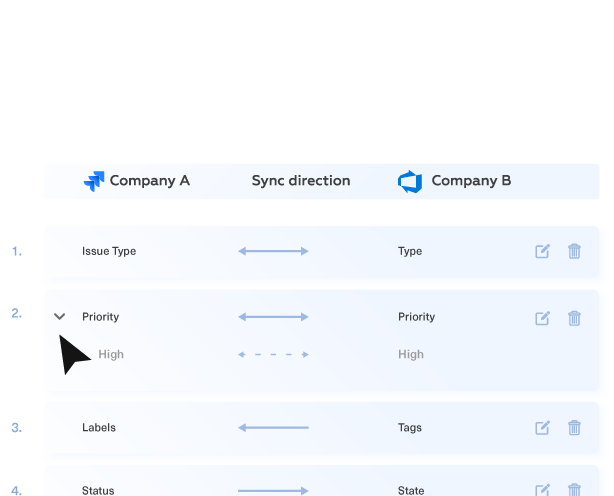
Visual Mode
- Drag-n-drop interface for faster, no-code set up
- Customize your synchronization rules from one side of the connection
Enjoy a seamless integration, no coding knowledge required.

Secure by Design

Decentralized Integration
In a decentralized integration setup, each side has full and independent control over the data it sends and receives. This approach enhances security and privacy by ensuring shared data remains safe from unauthorized access. It also removes single points of failure and makes the integrated systems more scalable and loosely connected, reducing unwanted dependencies.
Single-tenant Architecture
Offers enhanced data isolation, ensuring advanced data security, complete control over customization, and reliable performance.
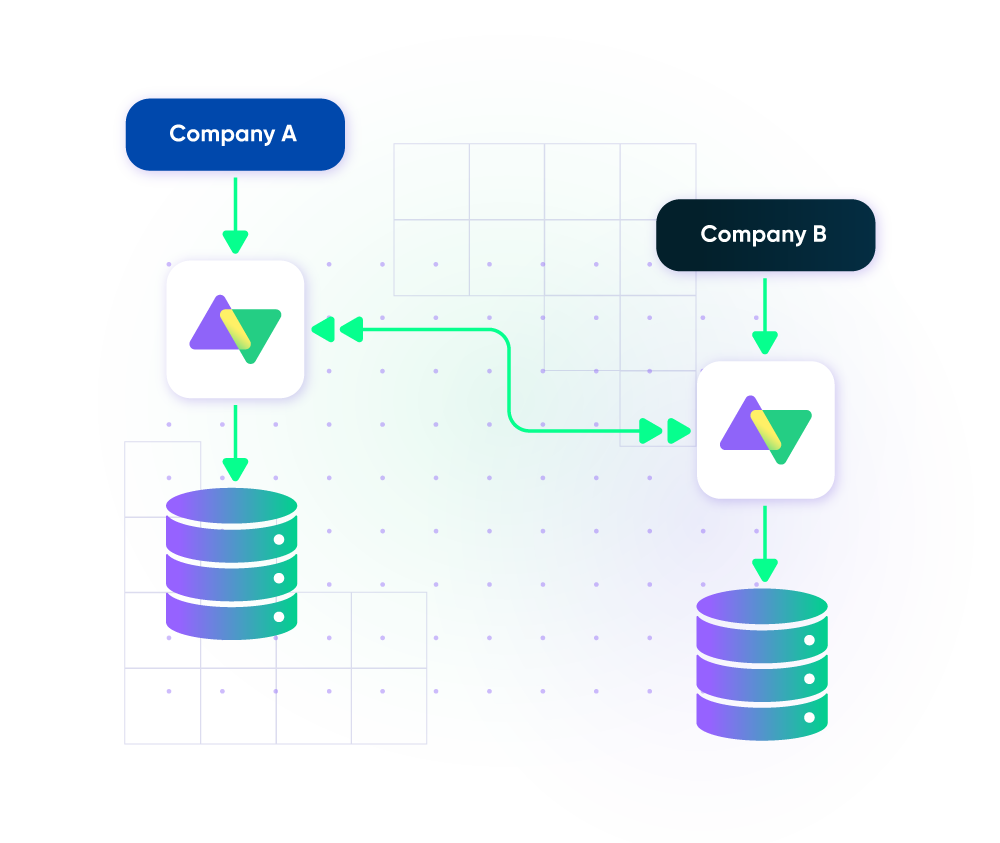
Handling Deleted Entities
Unlike other tools, Exalate alerts you if your integration partner deletes a synced entity on their end, ensuring you're informed of any deletions.
Error Handling
Synchronization will be recovered automatically once the network connectivity problem is resolved. If there's an issue with the Exalate App, an admin will be notified.
Connect Private and Public Instances
Establish secure connections even when one or more instances are behind a firewall.
Your Integration, Your Rules
Script Mode: Full Control with an AI Boost
Need custom scripts but lack the time or expertise to create them yourself?
Our on-demand scripting service will take the hassle off your hand so you can focus on what you do best. Either for troubleshooting your existing scripts or creating new ones, we will just tailor a solution that suits you.
Your Integration, Your Rules
Script Mode: Full Control with an AI Boost
Build even the most complex integrations with precision. Exalate’s Script Mode gives you total flexibility. Supercharged with AI, to help you script faster, reduce errors, and streamline advanced syncs.
- Exchange any data available via the connector's API
- Deepen, change, adjust existing connections easily
- Control outgoing and incoming data on each side
- Manage configs for all nodes using external script
Your Integration, Your Rules
Have granular control and full flexibility to craft your integrations with just a few lines of code. Or, prompt what you need and AI Assist will write the code for you.
- Exchange any data available via the connector's API
- Customize triggers using native query language
- Deepen, change, adjust existing connections easily
- Control outgoing and incoming data on each side
- Manage configs for all nodes using external script
Book a demo to see Exalate in action

Visual Mode
Enjoy a seamless integration, no coding knowledge required.
- Drag-n-drop interface for faster, no-code set up
- Customize your synchronization rules from one side of the connection

Basic Mode
For basic synchronization scenarios, a solution out-of-the-box.
- No-code, pre-made configuration
- Sync common fields (titles, comments, descriptions, attachments, IDs)
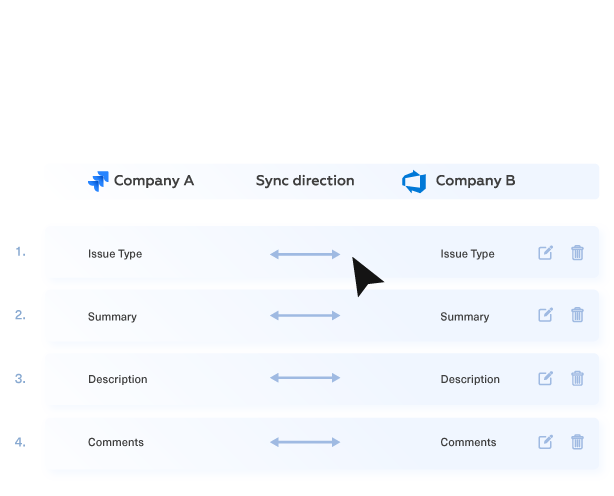
Your Friendly Exalate Documentation Sidekick
Aida provides everything you want to know about Exalate. Get instant answers to your queries, explore Exalate specifics and access a wealth of knowledge straight from our AI-powered chat. Available on our documentation.

An Expert Co-pilot to Craft Sync Rules with Precision
AI Assist helps you implement your integrations. It writes sync scripts for simple or complex integration use cases. Designed for users of all skill levels or technical proficiencies.
It’s built upon Exalate UI.

integration services
Outsource Your Integration Project
We know integration can be a lot of work.
Have an integration expert taking care of every aspect of your integration, from concept to full-scale operations.
- Custom development of connectors
- Managed integrations
- 24/7 support for critical issues
- Ready to scale
- Dedicated delivery manager
- Outsourced Internal IT Service Desk

FAQ
Exalate is flexible enough to cover almost all integration use cases through its Groovy-based scripting engine.
You can start with basic sync scenarios out-of-the-box or implement advanced use cases using the Script mode.
Essentially, you can sync any default or custom properties, or entities available via REST APIs, set custom mappings, add advanced logic to your integrations, and do much more.
Check out some use cases implemented with Exalate.
Exalate integrates Jira (Cloud and On-premise), Salesforce, Azure DevOps, ServiceNow, Zendesk, GitHub, and more. It can be deployed on docker for all these platforms. Start your free trial here.
You can connect these platforms in the following ways:
- One to one
- One to many
- Many to one
- Many to many
Or use a combination of the above models. You can also request a custom connector or outsource your entire integration to us.
Yes, we offer a 30-day free trial. We recommend you book a short call with our experts to discuss your use case and help you get started.
In case you feel Exalate is not the right fit, you can cancel your trial anytime, and you’ll not be charged.
At Exalate, keeping your data private, safe, and secure is the topmost priority. Hence, we follow the best-in-class security practices and procedures.
We have the following security measures in place:
- ISO 27001:2022 Certified
- Single-tenancy model
- Decentralized integration control so you decide what gets shared and what doesn’t
- Secure connection between instances via a shared secret, no need to share access credentials
- Authentication lies with the underlying platform
- GDPR compliant
- JWT-based tokens authenticate every data transfer request to ensure the destination instance always gets data from the expected source instance.
- Transport Layer Security (TLS) 1.3 (and 1.2)
To learn more about the complete security posture, have a look at the Exalate Security and Architecture Whitepaper.
Check out the data security and privacy statement here.
The price of your integration is calculated based on the number and type of platforms you need to synchronize.
For example, Jira Cloud (500 users) <> Azure DevOps Cloud integration use case would differ in price from, say a Salesforce <> ServiceNow <> GitHub Enterprise integration.
If you expect a very high number of synchronizations and you’d prefer to have Enterprise SLA and Solution Assistance, that would influence the price too.
If you’d like to know how much Exalate would cost for your use case, please ask us via live chat.
We offer Standard and Premier Support depending on customer needs and the running Service Level Agreement.
As part of Premier Support, we provide higher SLAs, shorter resolution time, configuration assistance, and optimized escalation paths.
Decentralized integration is a setup where each integrating party has independent and full control over information exchange.
You decide what needs to be sent to and received from the destination without a mandatory requirement to consult or inform the other side. This way, every platform admin can change their local configuration without affecting their integration partner’s configuration. Additionally, it increases your data security and avoids accidental access to shared information.
The systems in this arrangement are inherently distributed. This makes them loosely coupled, avoiding a single point of failure. It also enhances the maintainability and scalability of your integration.
Yes, the Exalate application needs to be installed on all integrating platforms. This means you need a valid Exalate license/subscription on both your instance and your partner’s instance.
Contact our sales team for more information about our licensing and pricing model.
Exalate has already been in use since 2014 at a large number of enterprise clients. Performance tests are continually implemented to assure there will be no noticeable load on both the app or the issue tracker.
For example, some of our customers continually processes, on average, 12.000 issues per month without experiencing any significant impact on the overall instance.
Yes, you can sync historical data using Exalate.
There are two ways to do this:
Bulk Exalate – Syncs all the existing data that fulfills the trigger condition (s). This option is available under the Triggers tab.
Bulk Connect – Connects existing entities residing in different systems. You need to upload a .csv file that contains the mappings. This option is available in the Exalate admin menu panel.
Learn more about Bulk Connect and Bulk Exalate.
